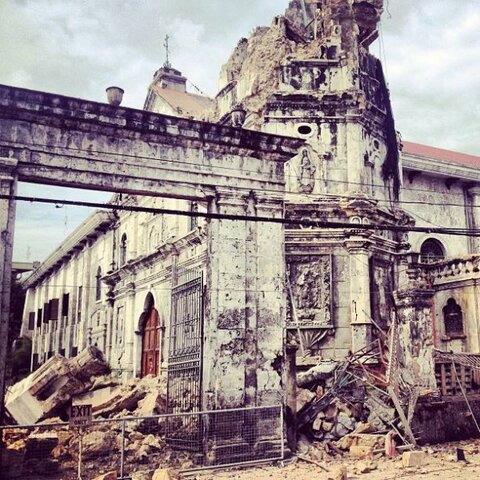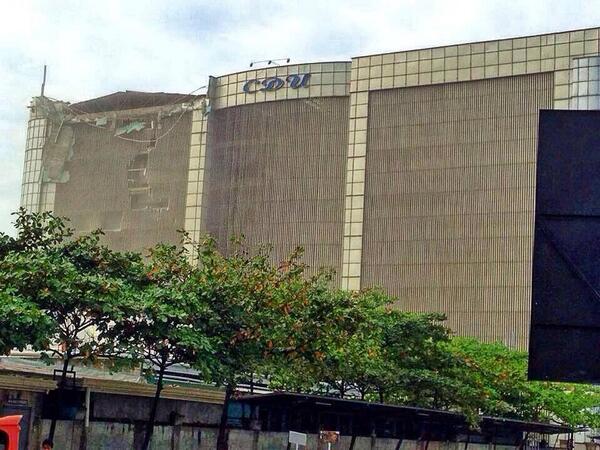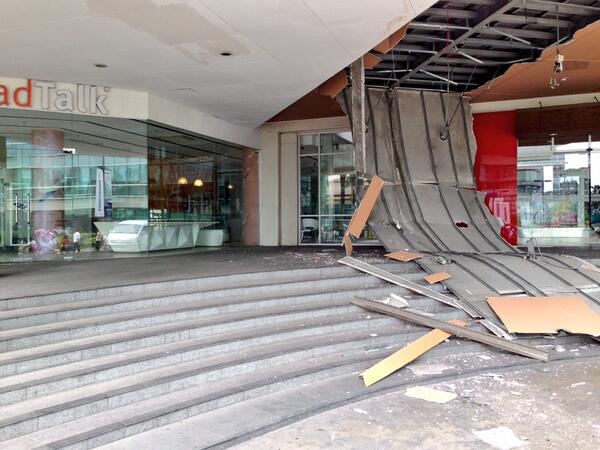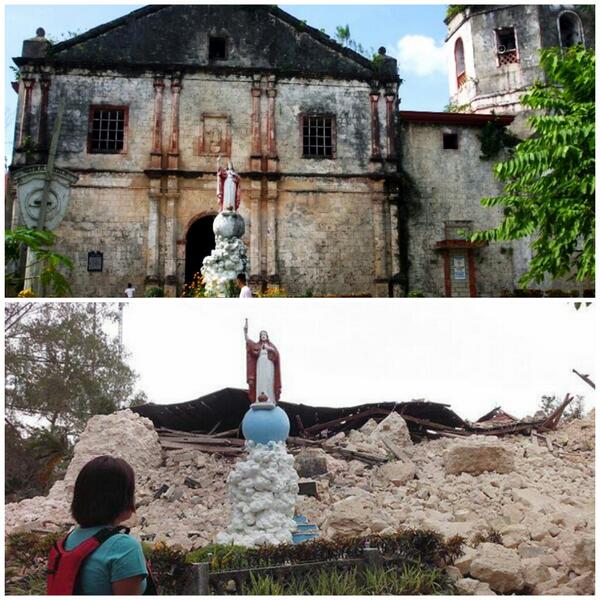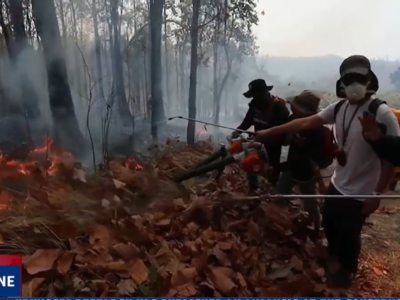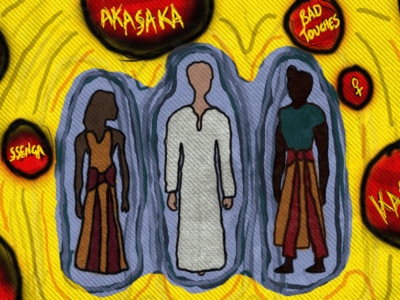A magnitude 7.2 earthquake killed more than 150 people in the central Philippine islands of Bohol and Cebu Tuesday October 15, 2013.
The strong earthquake started in Bohol, where the epicenter was recorded at 8:12 in the morning and caused the destruction of roads, homes, buildings, and historic churches in the island.
The neighboring island of Cebu, which is the second largest urban center in the country outside of the national capital Manila, also bore the brunt of the quake with shopping malls, public markets, schools, and other buildings bearing damage.
Other provinces in the central Philippine area also felt the tremors but sustained no significant harm to people or physical structures.
Striking early in the morning during a holiday, the earthquake caught many by surprise. Hundreds of aftershocks of varying intensity also followed the main quake.
Social media users recorded their earthquake experiences through various networking sites such as Facebook, Twitter, YouTube, and Instagram:
Funny how my dad came running out the shower trying to put some pants on, and my sister diving in the bed with her laptop in her arms. ????
— Francesca Fua (@francisfua) October 15, 2013
Wow, the earthquake shook our plane hard here on the ground at Iloilo International Airport. I thought they were just loading something.
— Lloyd (@lloydthelostboy) October 15, 2013
was jolted awake from deep sleep by a strong quake & dashed outside. blessed to be with my family. on alert for aftershocks #earthquake
— Karollyn Mae Laya-on (@klyme_layaon) October 15, 2013
Today is #Heritage National State of Calamity
— Ka Bino Guerrero (@Kabinoguerrero) October 15, 2013
Social media users also took photos of the damage caused by the powerful earthquake and posted them online:
Some of the most badly damaged structures by the earthquake are the historic limestone churches in Bohol. Built through polo or Filipino slave labor during the Spanish colonial era in the 1700s and 1800s, these churches have become some of the country's most prized cultural heritage.


